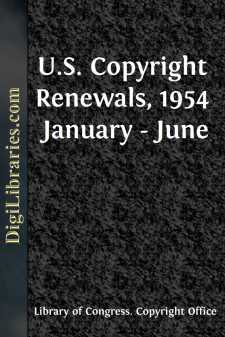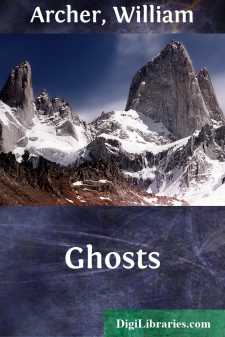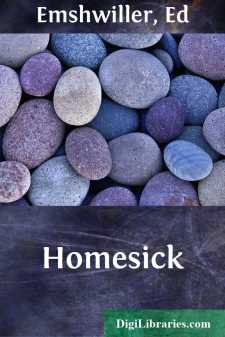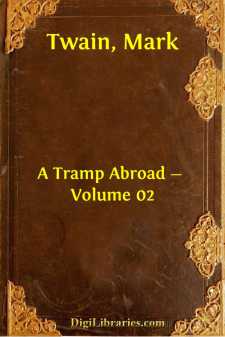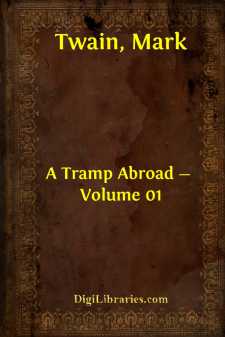Categories
- Antiques & Collectibles 13
- Architecture 36
- Art 48
- Bibles 22
- Biography & Autobiography 813
- Body, Mind & Spirit 141
- Business & Economics 28
- Children's Books 12
- Children's Fiction 9
- Computers 4
- Cooking 94
- Crafts & Hobbies 4
- Drama 346
- Education 46
- Family & Relationships 57
- Fiction 11825
- Games 19
- Gardening 17
- Health & Fitness 34
- History 1377
- House & Home 1
- Humor 147
- Juvenile Fiction 1873
- Juvenile Nonfiction 202
- Language Arts & Disciplines 88
- Law 16
- Literary Collections 686
- Literary Criticism 179
- Mathematics 13
- Medical 41
- Music 40
- Nature 179
- Non-Classifiable 1768
- Performing Arts 7
- Periodicals 1453
- Philosophy 64
- Photography 2
- Poetry 896
- Political Science 203
- Psychology 42
- Reference 154
- Religion 513
- Science 126
- Self-Help 83
- Social Science 81
- Sports & Recreation 34
- Study Aids 3
- Technology & Engineering 59
- Transportation 23
- Travel 463
- True Crime 29
A Short History of the United States
by: Edward Channing
Description:
Excerpt
CHAPTER I
THE EUROPEAN DISCOVERY OF AMERICA
Leif Ericson.
1. Leif Ericson discovers America, 1000.--In our early childhood many of us learned to repeat the lines:--
Columbus sailed the ocean blueIn fourteen hundred, ninety-two.
Leif discovers America, 1000. Higginson, 25-30; American History Leaflets, No. 3.
We thought that he was the first European to visit America. But nearly five hundred years before his time Leif Ericson had discovered the New World. He was a Northman and the son of Eric the Red. Eric had already founded a colony in Greenland, and Leif sailed from Norway to make him a visit. This was in the year 1000. Day after day Leif and his men were tossed about on the sea until they reached an unknown land where they found many grape-vines. They called it Vinland or Wineland. They Then sailed northward and reached Greenland in safety. Precisely where Vinland was is not known. But it certainly was part of North America. Leif Ericson, the Northman, was therefore the real discoverer of America.
[Illustration: EUROPE, ICELAND, GREENLAND, AND NORTH AMERICA.]
Marco Polo, Cathay, and Cipango.
2. Early European Travelers.--The people of Europe knew more of the lands of Asia than they knew of Vinland. For hundreds of years missionaries, traders, and travelers visited the Far East. They brought back to Europe silks and spices, and ornaments of gold and of silver. They told marvelous tales of rich lands and great princes. One of these travelers was a Venetian named Marco Polo. He told of Cathay or China and of Cipango or Japan. This last country was an island. Its king was so rich that even the floors of his palaces were of pure gold. Suddenly the Turks conquered the lands between Europe and the golden East. They put an end to this trading and traveling. New ways to India, China, and Japan must be found.
Portuguese seamen.
3. Early Portuguese Sailors.--One way to the East seemed to be around the southern end of Africa--if it should turn out that there was a southern end to that Dark Continent. In 1487 Portuguese seamen sailed around the southern end of Africa and, returning home, called that point the Cape of Storms. But the King of Portugal thought that now there was good hope of reaching India by sea. So he changed the name to Cape of Good Hope. Ten years later a brave Portuguese sailor, Vasco da Gama, actually reached India by the Cape of Good Hope, and returned safely to Portugal (1497).
Columbus and his beliefs. Higginson, 31-35; Eggleston, 1-3; American History Leaflets, No. 1.
4. Columbus.--Meantime Christopher Columbus, an Italian, had returned from an even more startling voyage. From what he had read, and from what other men had told him, he had come to believe that the earth was round. If this were really true, Cipango and Cathay were west of Europe as well as east of Europe. Columbus also believed that the earth was very much smaller than it really is, and that Cipango was only three thousand miles west of Spain. For a time people laughed at the idea of sailing westward to Cipango and Cathay. But at length Columbus secured enough money to fit out a little fleet.
Columbus reaches America, 1492. Higginson, 35-37; Eggleston, 3-5.
5. The Voyage, 1492.--Columbus left Spain in August, 1492, and, refitting at the Canaries, sailed westward into the Sea of Darkness. At ten o'clock in the evening of October 20, 1492, looking out into the night, he saw a light in the distance. The fleet was soon stopped. When day broke, there, sure enough, was land. A boat was lowered, and Columbus, going ashore, took possession of the new land for Ferdinand and Isabella, King and Queen of Aragon and Castile. The natives came to see the discoverers. They were reddish in color and interested Columbus--for were they not inhabitants of the Far East? So he called them Indians.
[Illustration: SHIPS, SEA-MONSTERS, AND INDIANS. From an early Spanish book on America.]
The Indians, Higginson, 13-24; Eggleston, 71-76.
Columbus discovers Cuba.
6. The Indians and the Indies.--These Indians were not at all like those wonderful people of Cathay and Cipango whom Marco Polo had described. Instead of wearing clothes of silk and of gold embroidered satin, these people wore no clothes of any kind. But it was plain enough that the island they had found was not Cipango. It was probably some island off the coast of Cipango, so on Columbus sailed and discovered Cuba. He was certain that Cuba was a part of the mainland of Asia, for the Indians kept saying "Cubanaquan." Columbus thought that this was their way of pronouncing Kublai Khan--the name of a mighty eastern ruler. So he sent two messengers with a letter to that powerful monarch. Returning to Spain, Columbus was welcomed as a great admiral. He made three other voyages to America. But he never came within sight of the mainland of the United States.
John Cabot visits North America, 1497. Higginson, 40-42; Eggleston, 8-10; American History Leaflets, No. 9.
7. John Cabot, 1497.--While Columbus explored the West Indies, another Italian sailed across the Sea of Darkness farther north. His name was John Cabot, and he sailed with a license from Henry VII of England, the first of the Tudor kings. Setting boldly forth from Bristol, England, he crossed the North Atlantic and reached the coast of America north of Nova Scotia. Like Columbus, he thought that he had found the country of the Grand Khan. Upon his discovery English kings based their claim to the right to colonize North America.
Americus Vespucius, his voyages and books. Higginson, 37-38; Eggleston, 7-8.
The New World named America.
8. The Naming of America.--Many other explorers also visited the new-found lands. Among these was an Italian named Americus Vespucius. Precisely where he went is not clear. But it is clear that he wrote accounts of his voyages, which were printed and read by many persons. In these accounts he said that what we call South America was not a part of Asia. So he named it the New World. Columbus all the time was declaring that the lands he had found were a part of Asia. It was natural, therefore, that people in thinking of the New World should think of Americus Vespucius. Before long some one even suggested that the New World should be named America in his honor. This was done, and when it became certain that the other lands were not parts of Asia, the name America was given to them also until the whole continent came to be called America.
[Illustration: AMERICUS VESPUCIUS.]
Balboa sees the Pacific, 1513.
Magellan's great voyage, 1520. Eggleston, 10-11.
9. Balboa and Magellan, 1513, 1520.--Balboa was a Spaniard who came to San Domingo to seek his fortune. He became a pauper and fled away from those to whom he owed money. After long wanderings he found himself on a high mountain in the center of the Isthmus of Panama. To the southward sparkled the waters of a new sea. He called it the South Sea. Wading into it waist deep, he waved his sword in the air and took possession of it for his royal master, the King of Spain. This was in 1513. Seven years later, in 1520, Magellan, a Portuguese seaman in the service of the Spanish king, sailed through the Straits of Magellan and entered the same great ocean, which he called the Pacific. Thence northward and westward he sailed day after day, week after week, and month after month, until he reached the Philippine Islands. The natives killed Magellan. But one of his vessels found her way back to Spain around the Cape of Good Hope.
Indian traditions.
10. Stories of Golden Lands.--Wherever the Spaniards went, the Indians always told them stories of golden lands somewhere else. The Bahama Indians, for instance, told their cruel Spanish masters of a wonderful land toward the north. Not only was there gold in that land; there was also a fountain whose waters restored youth and vigor to the drinker. Among the fierce Spanish soldiers was Ponce de Leon (Pon'tha da la-on'). He determined to see for himself if these stories were true.
De Leon visits Florida, 1513. Higginson, 42.
De Leon's death.
11. Discovery of Florida, 1513.--In the same year that Balboa discovered the Pacific Ocean, Ponce de Leon sailed northward and westward from the Bahamas. On Easter Sunday, 1513, he anchored off the shores of a new land. The Spanish name for Easter was La Pascua de los Flores. So De Leon called the new land Florida. For the Spaniards were a very religious people and usually named their lands and settlements from saints or religious events. De Leon then sailed around the southern end of Florida and back to the West Indies. In 1521 he again visited Florida, was wounded by an Indian arrow, and returned home to die.
Discovery of the Mississippi.
Conquest of Mexico.
12. Spanish Voyages and Conquests.--Spanish sailors and conquerors now appeared in quick succession on the northern and western shores of the Gulf of Mexico. One of them discovered the mouth of the Mississippi. Others of them stole Indians and carried them to the islands to work as slaves. The most famous of them all was Cortez. In 1519 he conquered Mexico after a thrilling campaign and found there great store of gold and silver. This discovery led to more expeditions and to the exploration of the southern half of the United States.
Coronado sets out from Mexico, 1540.
The pueblo Indians. Source Book, 6.
13. Coronado in the Southwest, 1540-42.--In 1540 Coronado set out from the Spanish towns on the Gulf of California to seek for more gold and silver. For seventy-three days he journeyed northward until he came to the pueblos (pweb'-lo) of the Southwest. These pueblos were huge buildings of stone and sun-dried clay. Some of them were large enough to shelter three hundred Indian families. Pueblos are still to be seen in Arizona and New Mexico, and the Indians living in them even to this day tell stories of Coronado's coming and of his cruelty. There was hardly any gold and silver in these "cities," so a great grief fell upon Coronado and his comrades.
[Illustration: By permission of the Bureau of Ethnology. THE PUEBLO OF ZUÑI (FROM A PHOTOGRAPH).]
Coronado finds the Great Plains.
14. The Great Plains.--Soon, however, a new hope came to the Spaniards, for an Indian told them that far away in the north there really was a golden land. Onward rode Coronado and a body of picked men. They crossed vast plains where there were no mountains to guide them. For more than a thousand miles they rode on until they reached eastern Kansas....



